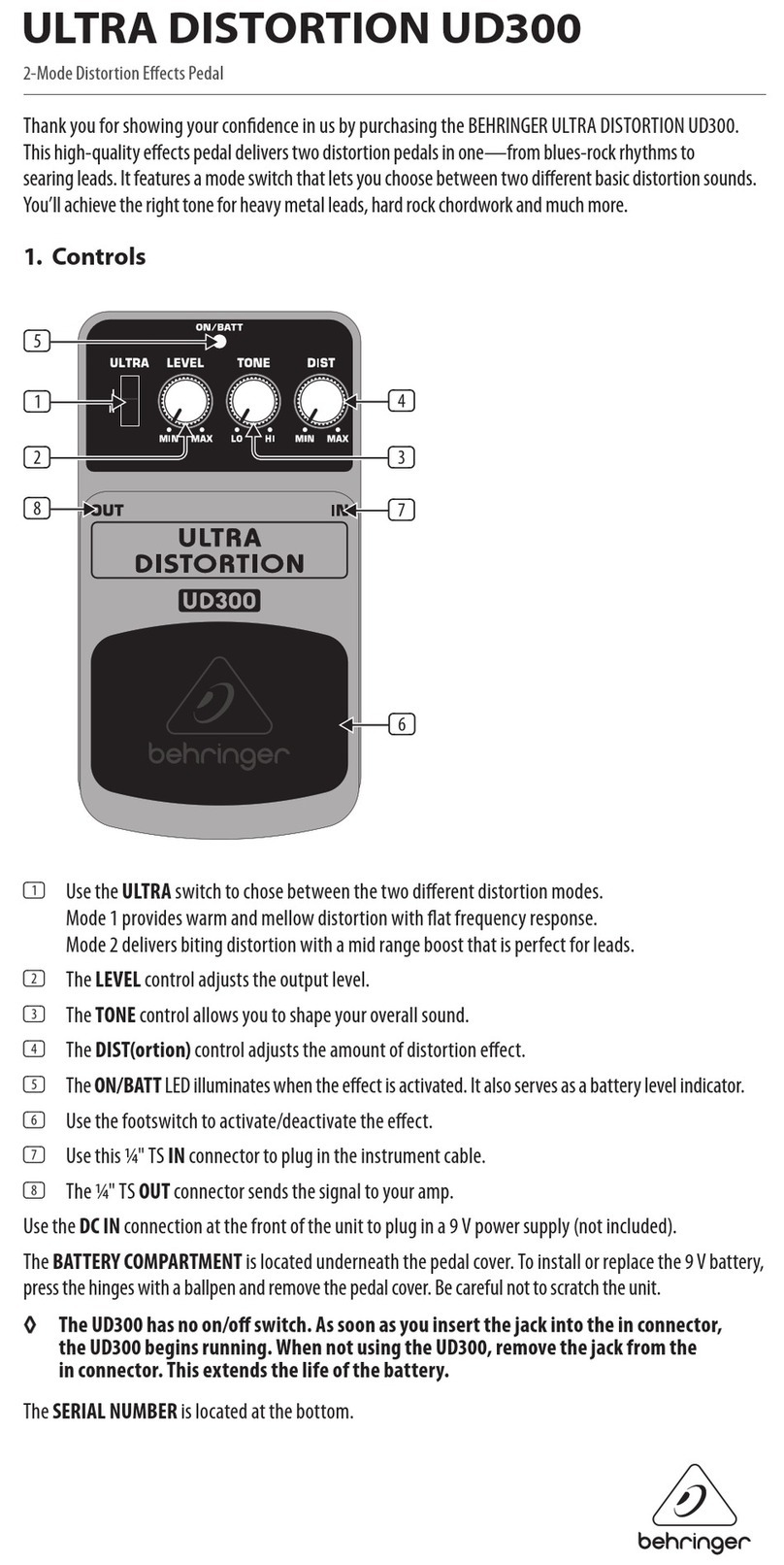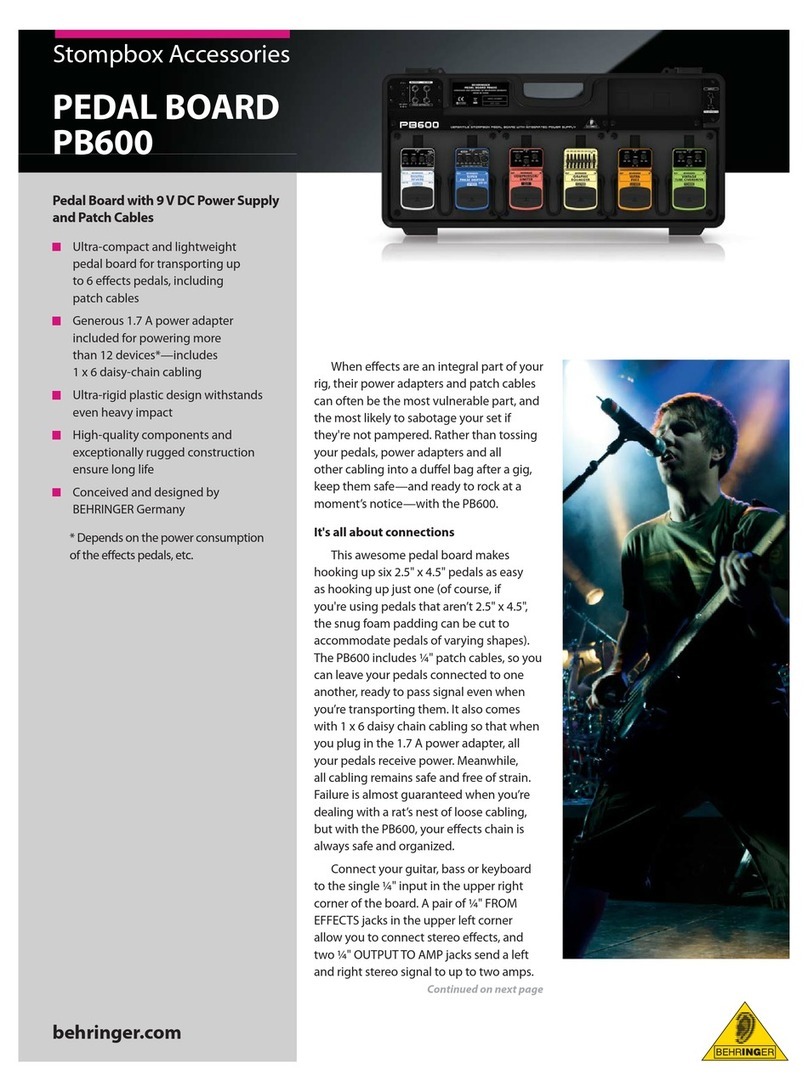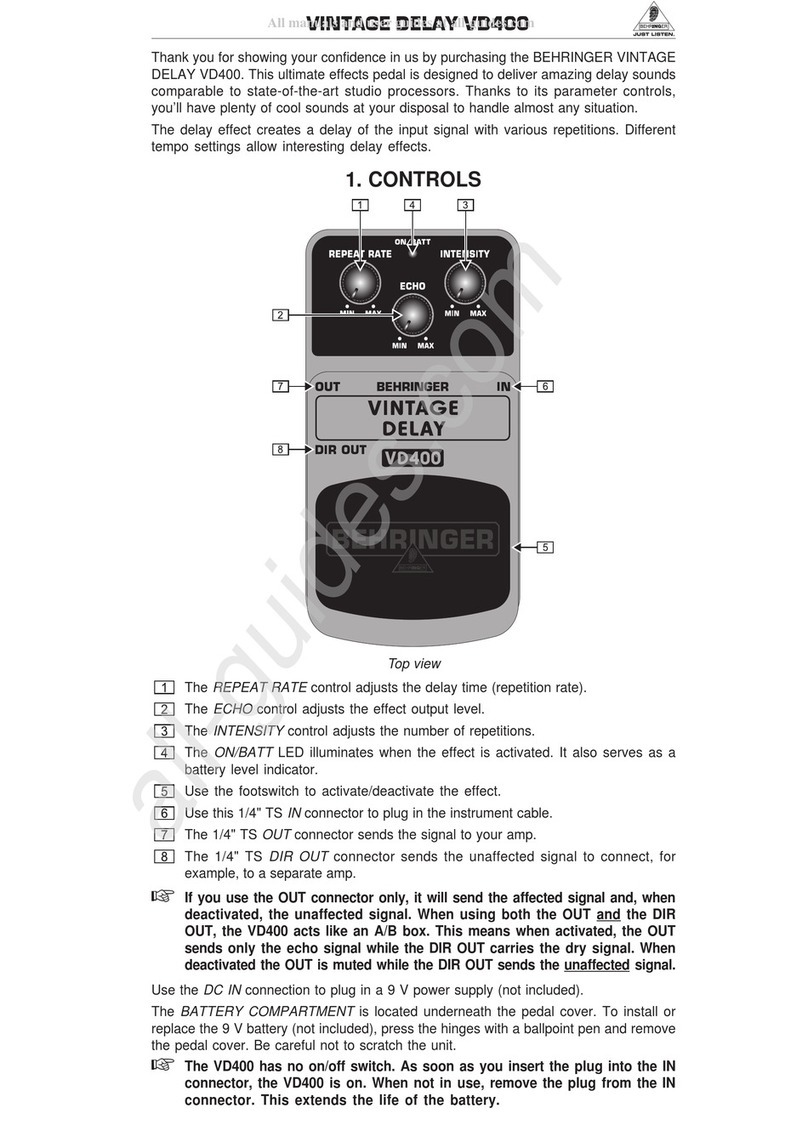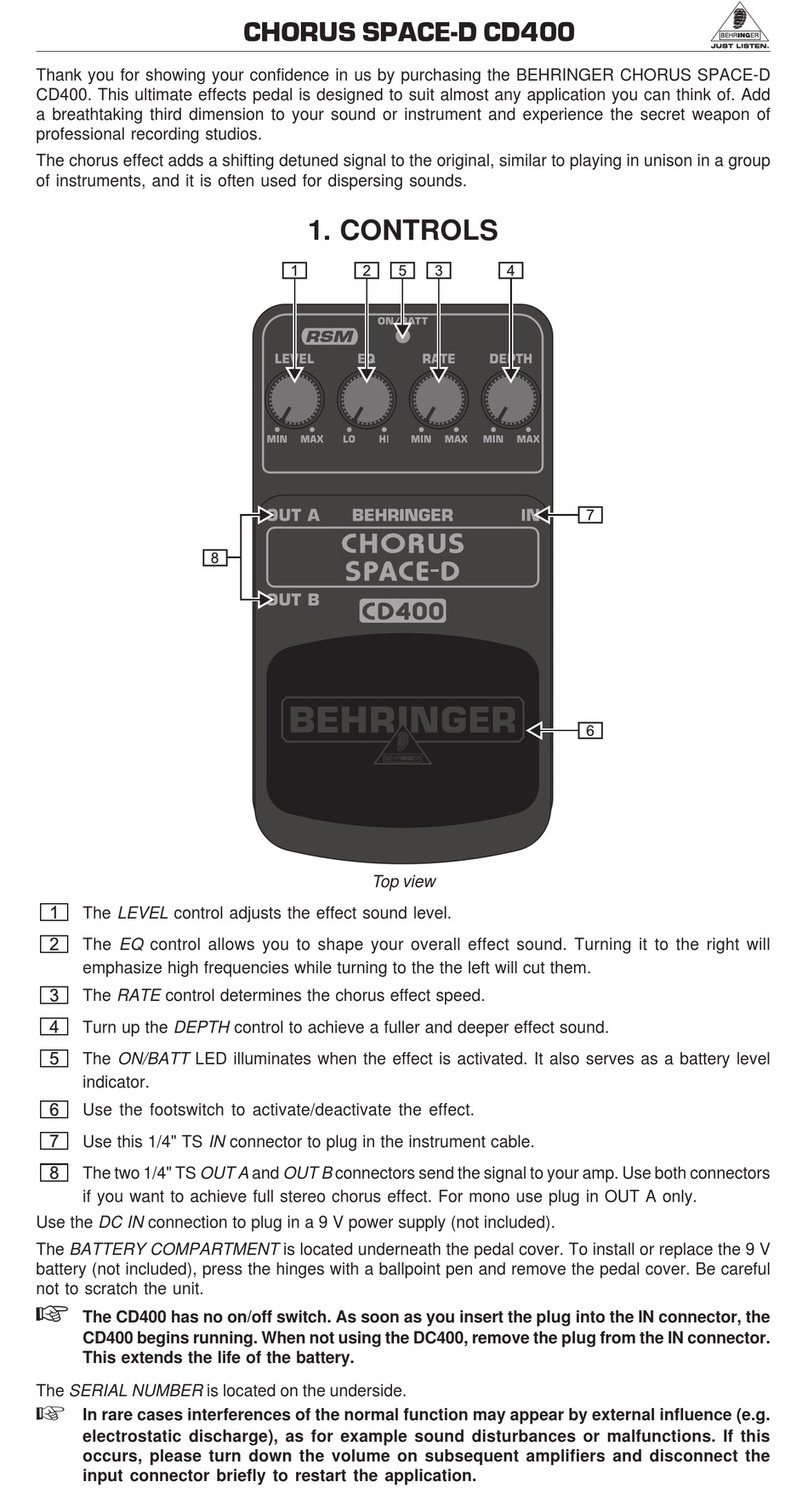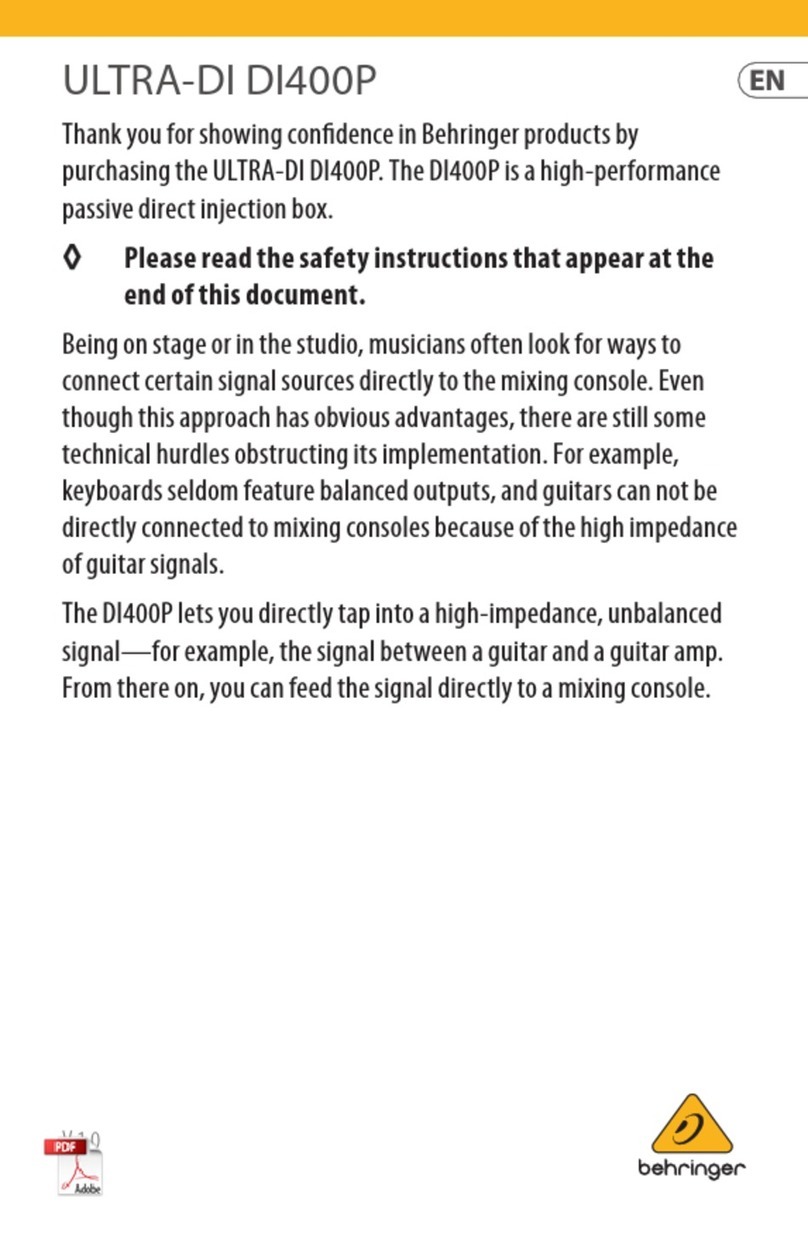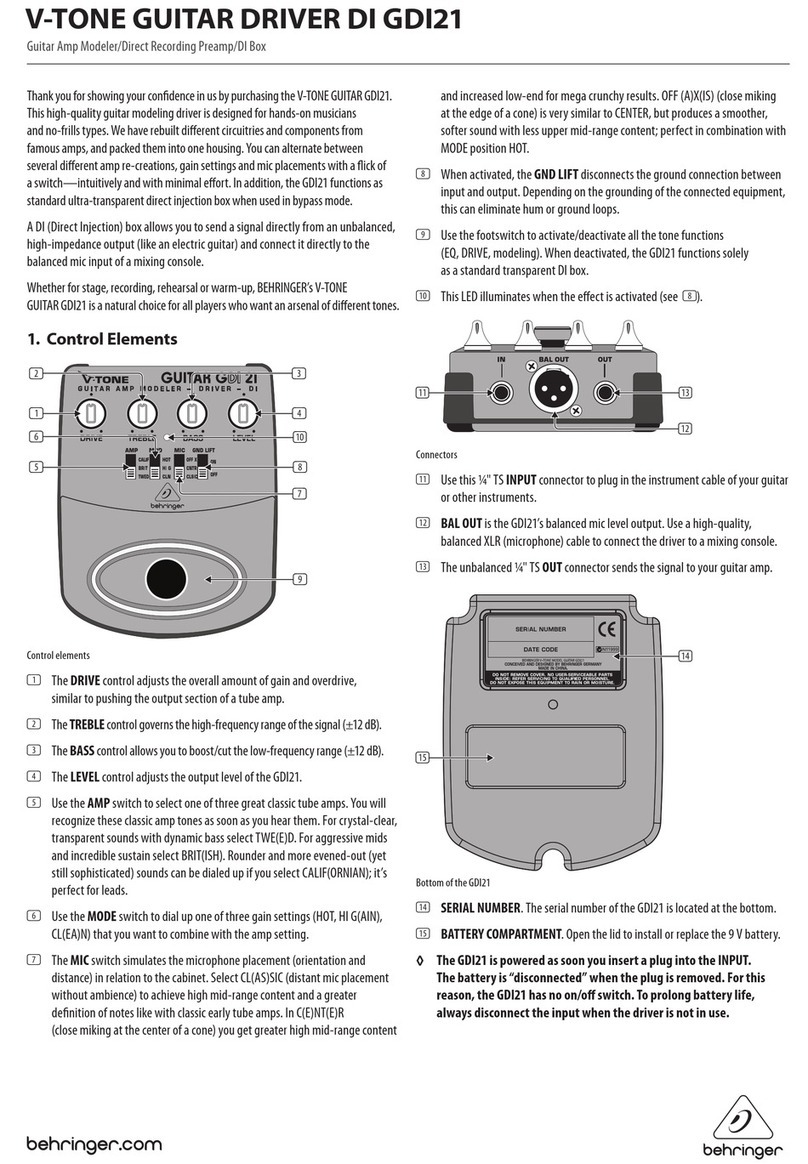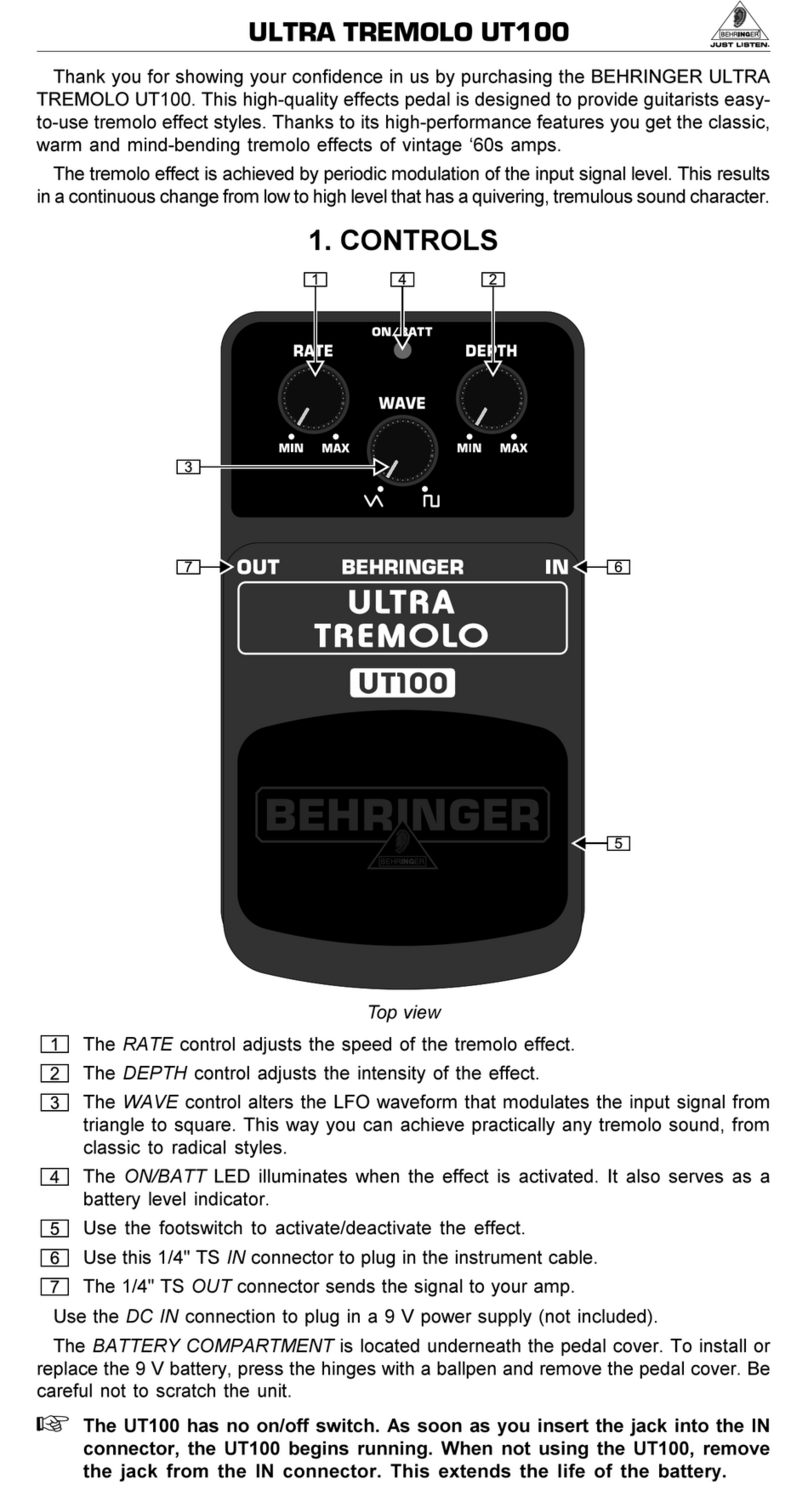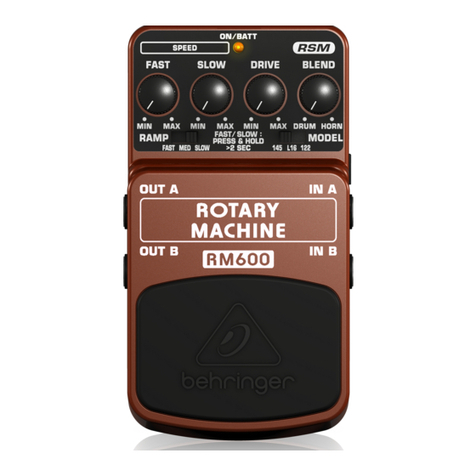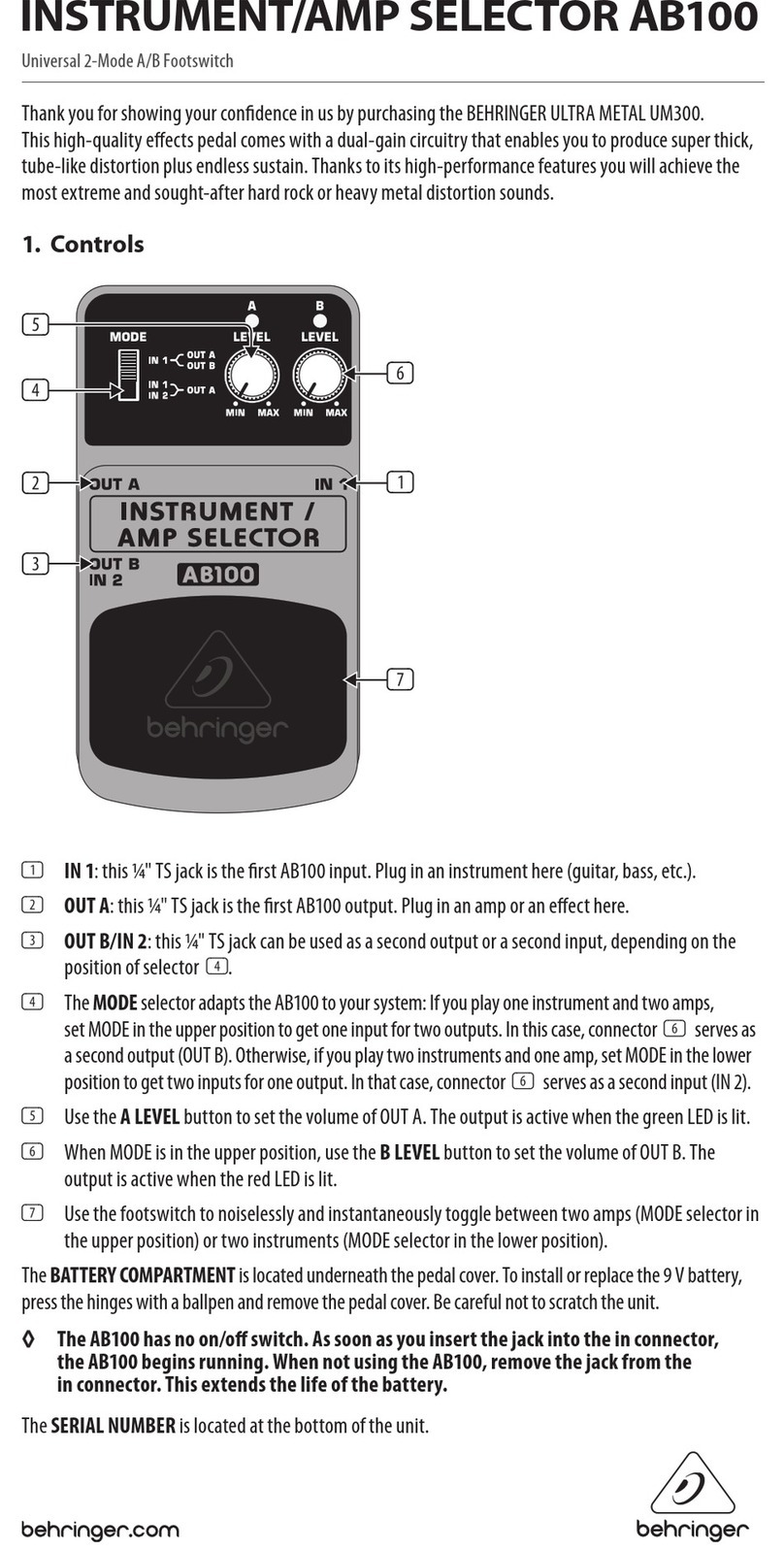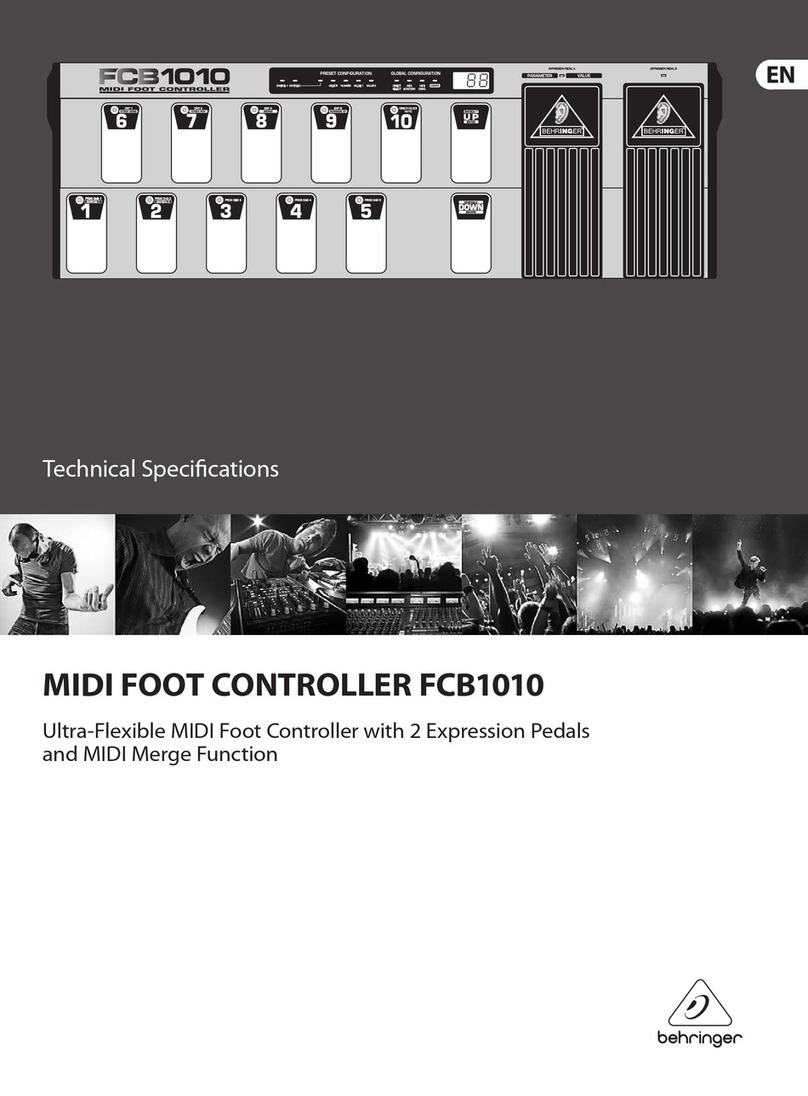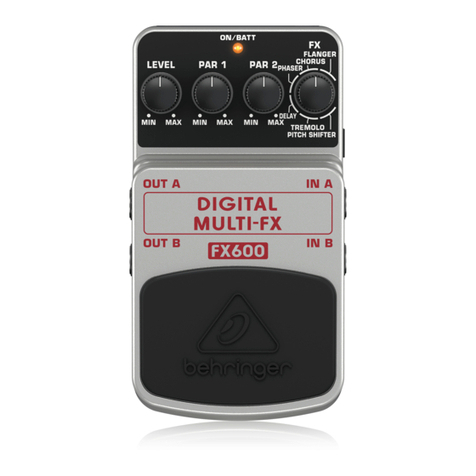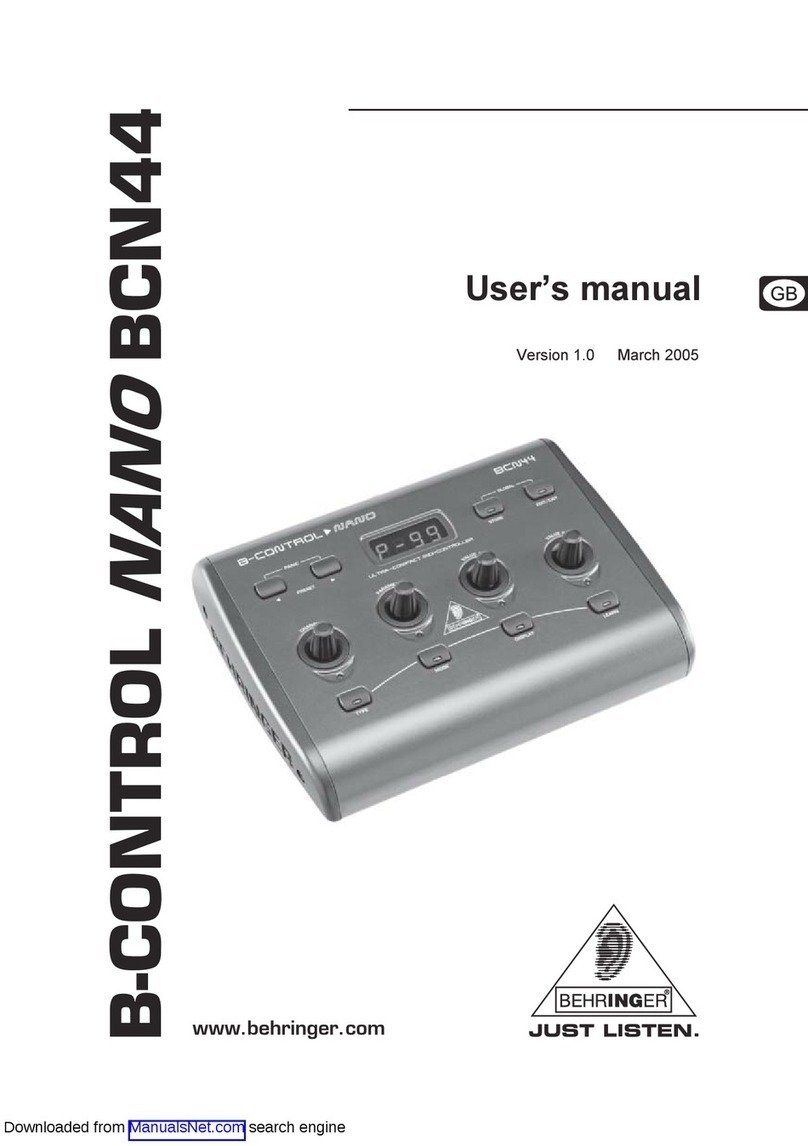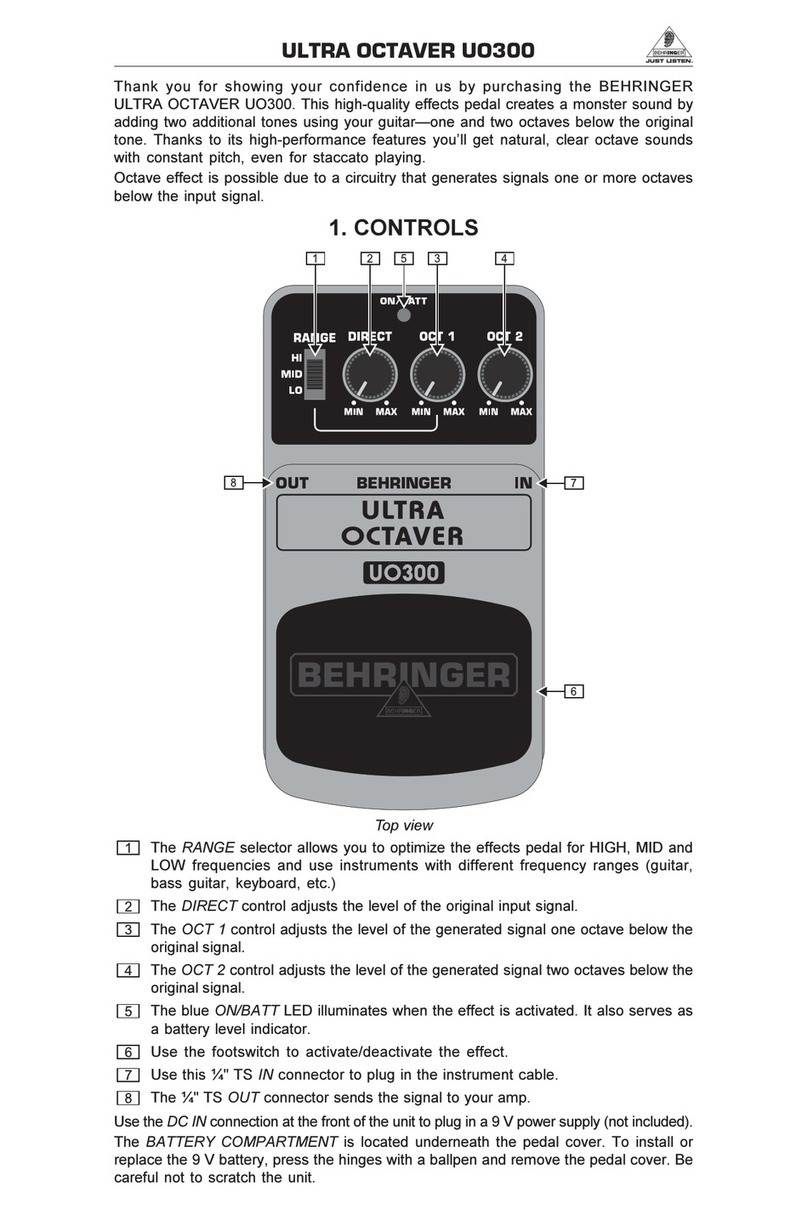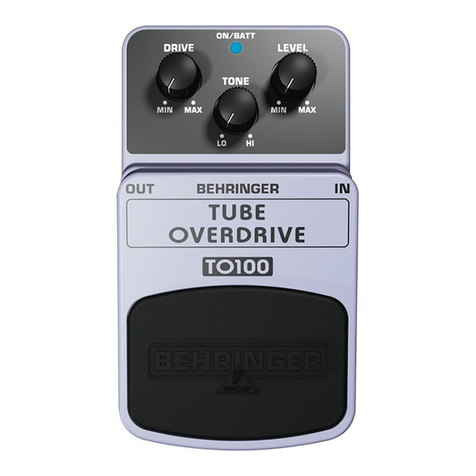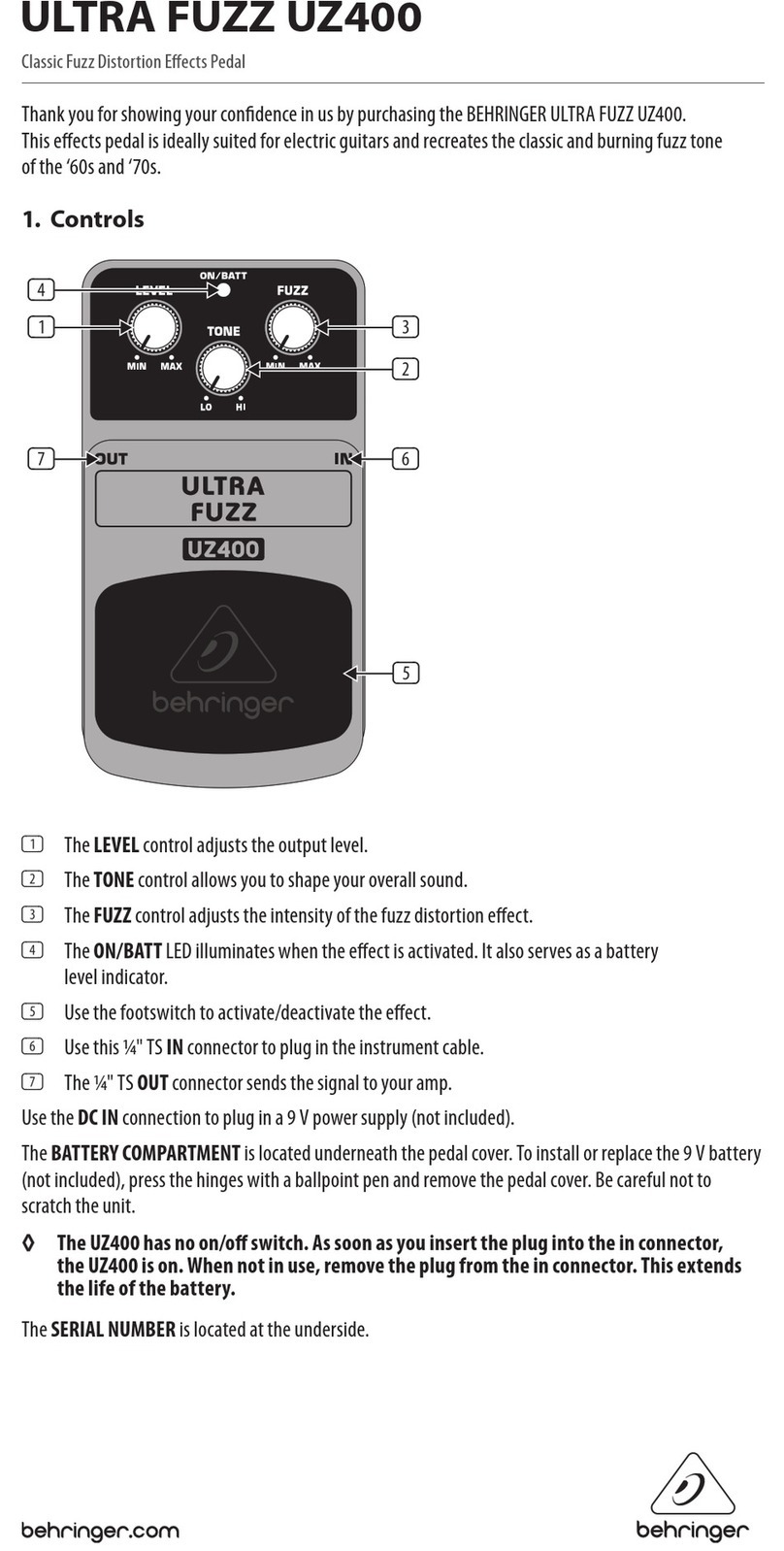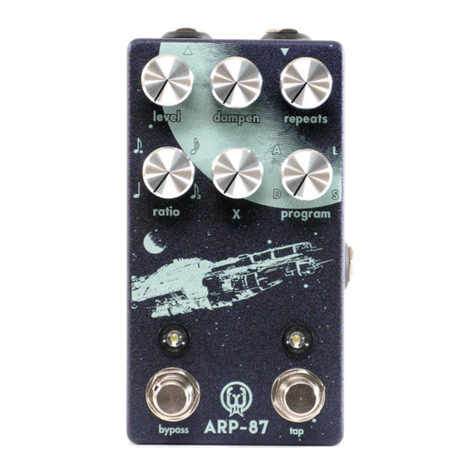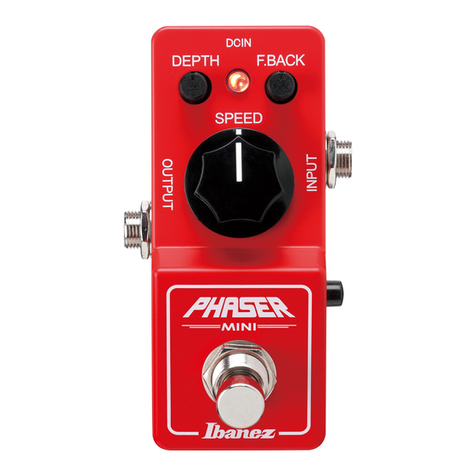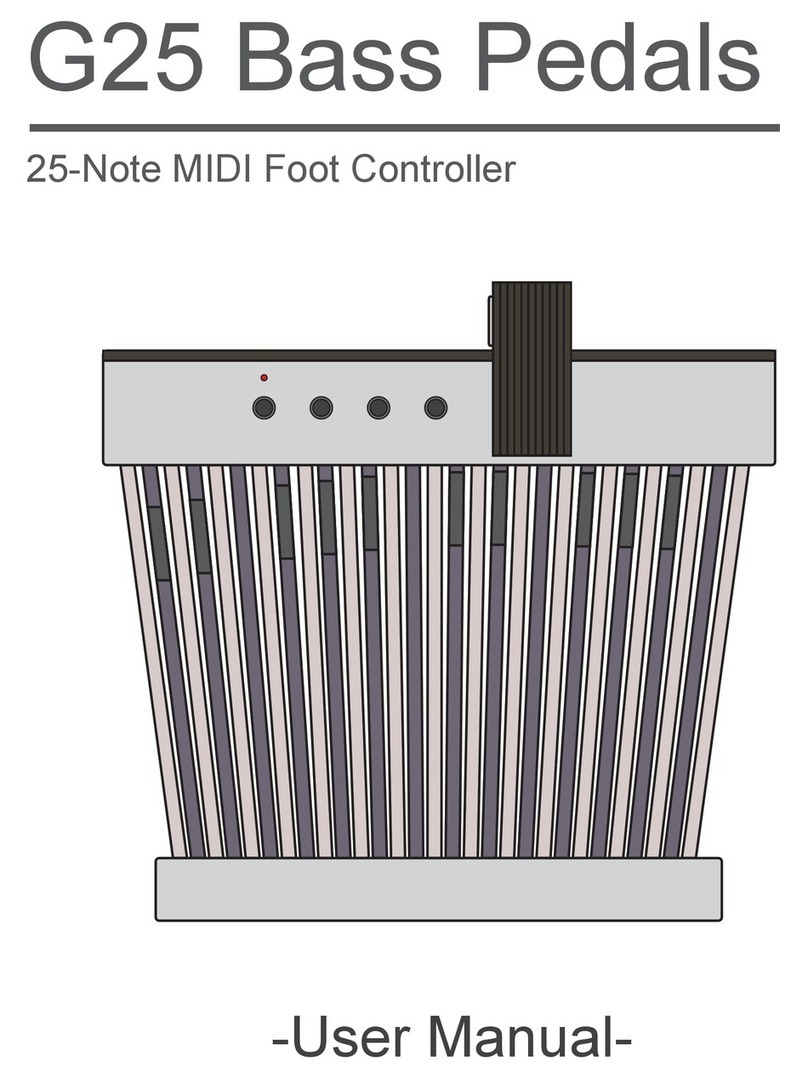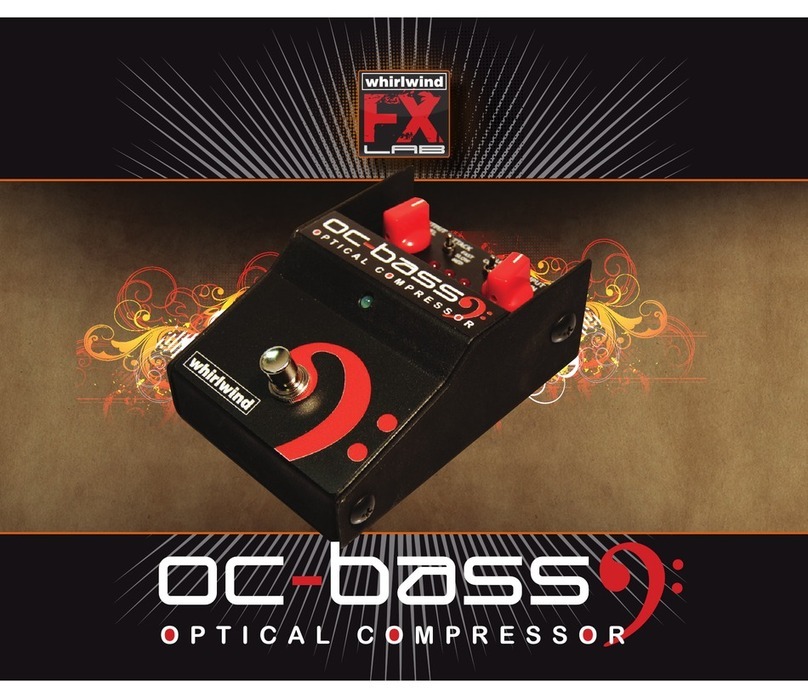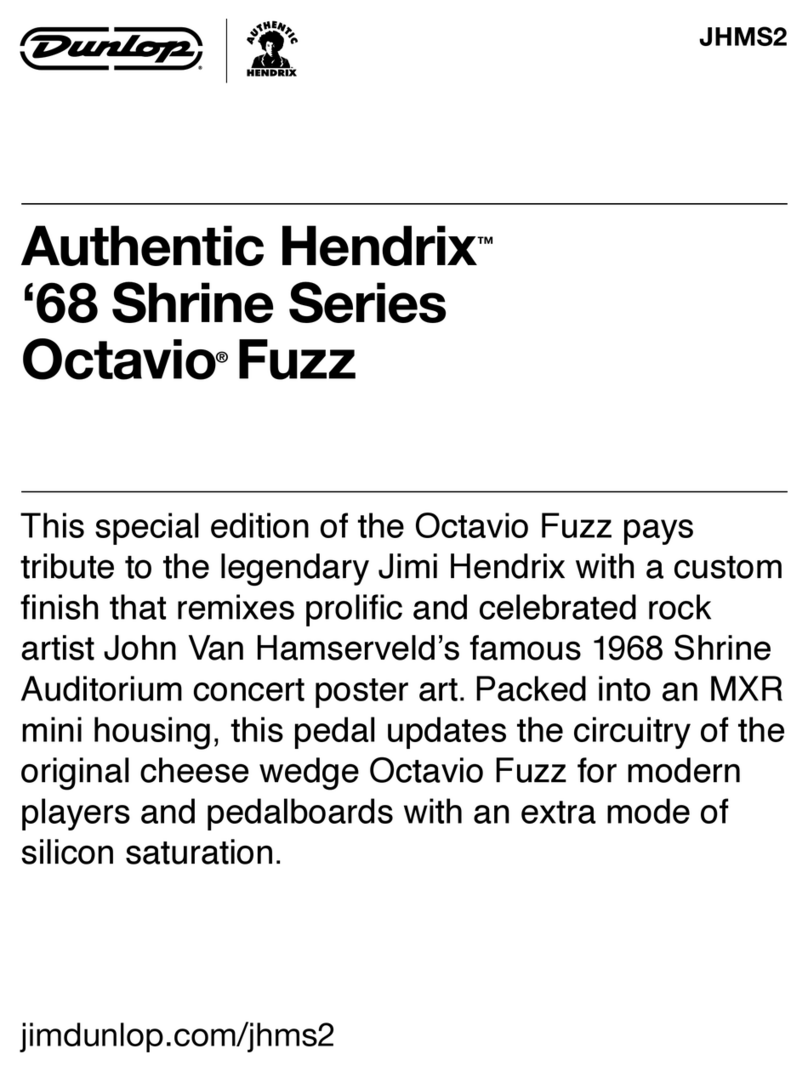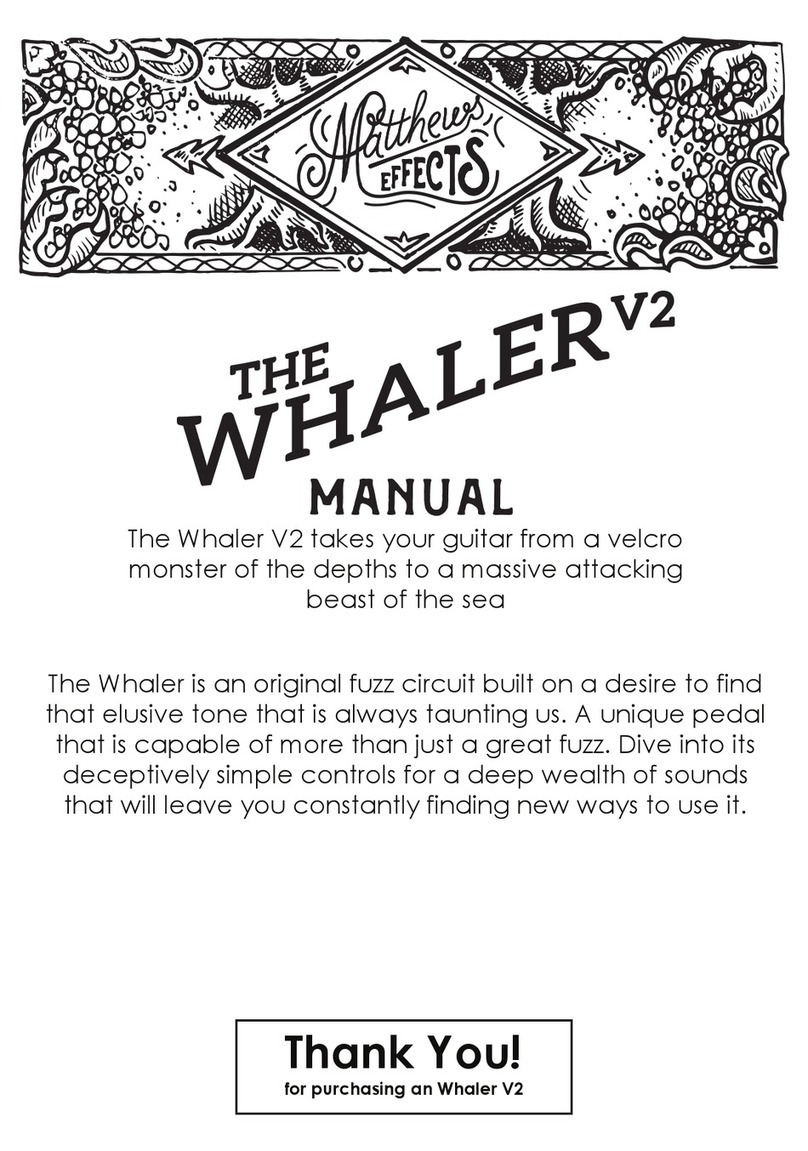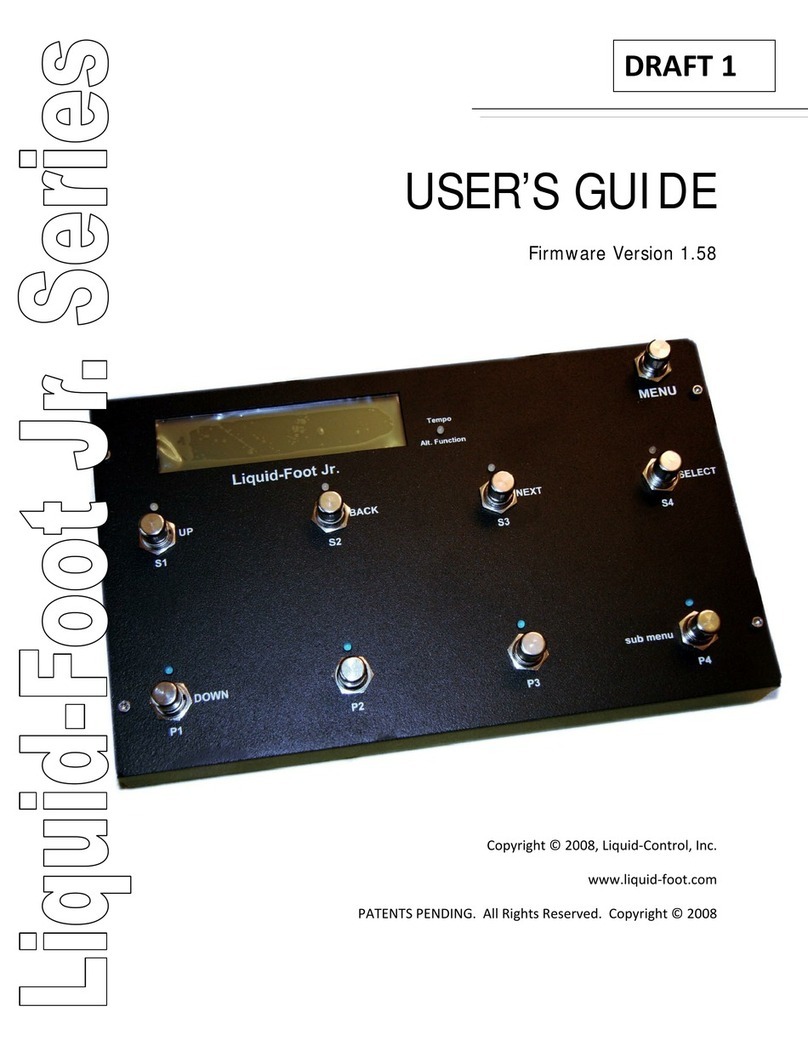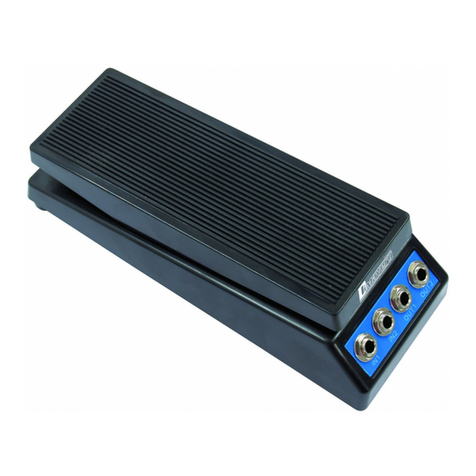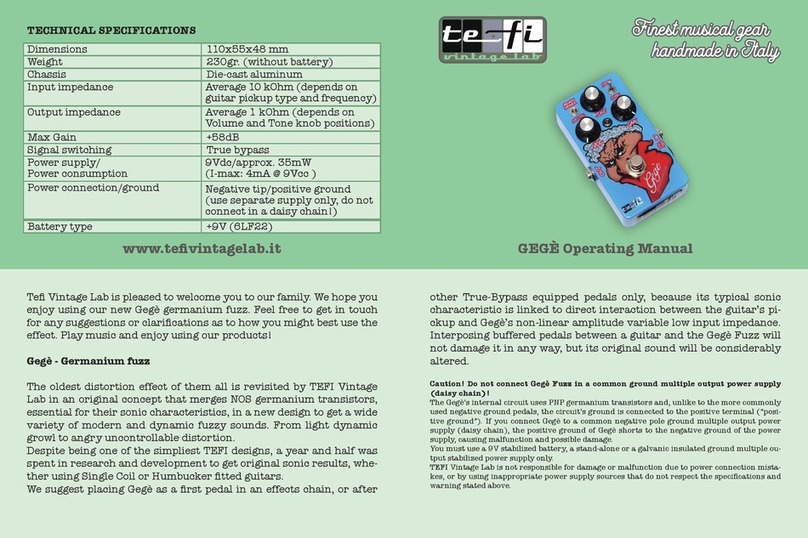
FLANGER MACHINE FL600
Ultimate Flanger Modeling Eects Pedal
Thank you for showing your condence in us by purchasing the BEHRINGER FLANGER MACHINE FL600.
This high-quality eects pedal delivers 11 extraordinary anger modes with extensive parameter control that
allow for maximum creativity so you always have the best sound regardless of the situation.
1. Controls
(1) The TYPE switch lets you choose between
a high-delity, DIGI(tal) anger with a
at frequency response, a vintage-type,
ANALOG bucket-brigade delay with ltered
frequency response and a classic studio
anger from the ‘70s (TAPE).
(2) With the TIME control, you can adjust the
anger delay time. Longer delay times produce
a sharper, more detuned sound, very close to a
chorus eect.
(3) The SPEED control determines the speed of the
anger eect. In CHORUS, VINTAGE, SINE,
SAW UP and SAW DOWN modes, turning this
control to the MIN(imum) brings the LFO to a halt.
(4) The F.BACK control determines the amount of
output signal fed back into the anger input in
order to confer more or less intensity to the eect.
(5) The blue ON/BATT LED illuminates when the eect is activated. It also serves as a battery level indicator.
(6) Turn up the DEPTH control to achieve a fuller and deeper eect sound.
(7) This control lets you choose between dierent anger eect modes:
TRG DWN: The modulation signal triggers a linearly falling wave envelope with a falling time
determined by the SPEED control.
TRG UP: The same as TRG DWN but with a linearly rising wave envelope.
CHORUS: The signal is modulated by a wide-range, triangular wave with a large oset producing a chorus-like eect.
VINTAGE: A simulation of the classic MXR anger.
RANDOM: A random value generator produces a modulation signal whose level varies with each cycle
of the LFO, which has a smoothing lter applied to the output.
STEP: The same as RANDOM but without the smoothing lter at the LFO’s output.
SINE: The signal is modulated by a sine wave.
ENV UP: The anger’s delay time is modulated according to the amplitude variations in the input signal as
detected by an envelope follower.
ENV DOWN: The inverted version of ENV UP.
SAW UP: A positive sawtooth wave modulates the signal.
SAW DOWN: A negative sawtooth wave modulates the signal.
(8) POL lets you choose between NEG(ative) and POS(itive) feedback anger modes.
(9) Use the two ¼" TS connectors IN A and IN B to plug in a stereo input signal. For mono use connect to IN A.
(10) The two ¼" TS connectors OUT A and OUTB send the signal to your amp. Use both outputs to achieve a
full stereo eect. For mono use, connect to OUT A.
In CHORUS, VINTAGE, SINE, SAW UP and SAW DOWN stereo modes, both channel signals are processed
with inverted phase LFOs. In SAW UP and SAW DOWN mono modes, both delay lines are mixed to create a
continuous rise/fall signal.
(3)
(2)
(7)
(8)
(11)
(10) (9)
(5)
(1)
(4) (6)
